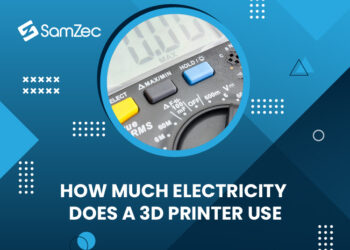A local area network not only comprises of cat6a plenum 1000ft cables, but it also needs several cable accessories to work with ease. One such cable accessory is the patch panel. No doubt these accessories are commonly used but still, not many people know what these accessories offer. Therefore, it’s important to know what are patch panels and how do they work.
You cannot achieve the bandwidth speeds your network demands over wireless networks. So, you have to use the ethernet cables and their relevant accessories to achieve the speeds your network system demands. In Short, we can say that these accessories are part and parcel of every local area network. Now we know what are some cable accessories such as patch panels are so important. Now, let’s discuss why one should consider them.
What is a Patch Panel?
A patch panel is a hardware tool that helps you connect and manage multiple Ethernet or fiber optic cables within a local area network system. In layman terms, you may refer patch panel as a cable organizer. It lets you manage a bundle of network cables with ease.
You can connect several cables at one end and use patch cables to connect these cables to your systems, routers, and network switches. Without patch panels now it is not possible to manage a bunch of network cables at once. You never know when a certain cable ruins the performance of your network system.
Why do You need a patch panel?
Let’s get straight to the point, yes you do need patch panels provided that you need smooth network performance. These patch panels are now kind of backbones for a variety of network systems. Even if you have set up an office at home, you would need a patch panel to connect multiple cables at once.
In other words, we can also say that an office or any workplace that has 15 to 20 employees would need a patch panel to connect their employee’s computers and laptops without any hassle. So, we can conclude that almost every local area network system should also use patch panels for easier connectivity.
Types of Patch Panels:
As a novice, you might think that patch panels would also be of various types. But in reality, the classification of patch panels varies a lot compared to other network accessories. The type of patch panel depends on the type of cable they support.
So, we have two main types of patch panels:
Copper Patch Panels
As the name indicates, these patch panels are made to support copper patch cables such as Cat6a Plenum 1000ft. They have support for both T568A and T568B wiring patterns. They are also available in both categories, loaded and unloaded.
Fiber Patch Panels
These patch panels are made for fiber optic cables of various types. They have spaces where you can connect fiber optic cables of any type. These panels are a bit pricier. Apart from the difference in cable type, there is no difference between the two types of patch panels.
Conclusion:
The patch panels let you connect multiple copper or fiber optic cables at once. You don’t have to run an individual Cat6a Plenum 1000ft from your source to your computer or laptop. This is where you can take the benefit of patch panels. They are affordable, reliable, and convenient options to achieve an enhanced networking experience. Whether you run a local area network system at home or office, a patch panel would help you a lot. So, now you know what are patch panels and how do they work.




















